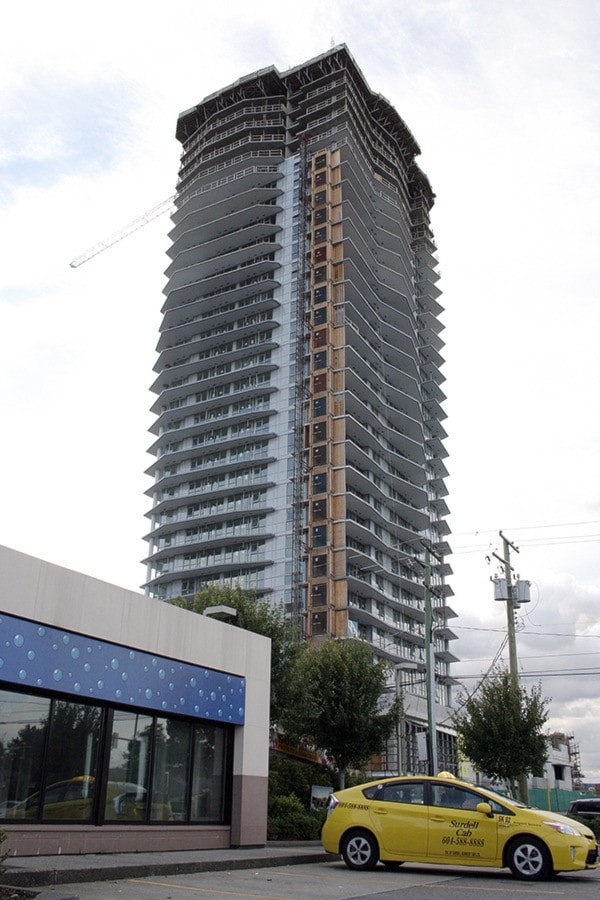In the Lower Mainland, we are at risk from many different natural hazards.
However, we are not adequately considering natural hazards in our decision-making at both a governmental and individual scale. In particular, Delta, Richmond and Vancouver’s False Creek are most at risk as these low-lying areas built on silts and sands, or artificial land, will be heavily impacted by earthquakes, which need to be considered in housing decisions.
What are the potential implications? We need to seriously consider if building highrises on floodplains (i.e. Richmond and Delta) and tidal flats with artificial land (i.e. False Creek) is worth the risk of collapse when a large earthquake impacts the area. There is a one-in-four chance that the region will have another large earthquake in the next 50 years. It is not a case of if a large earthquake will hit; it is a question of when.
More importantly, residents and potential residents need to be informed of the implications before making the decision to move to these vulnerable areas. Do they know that because Richmond and Delta are on silts and soils, and False Creek is on artificial land made up of landfill from projects, scrap lumber and bricks, and industrial waste, they will receive wave amplification, meaning a larger intensity of earthquake shaking? Do they know that liquefaction during the earthquake will cause the ground to liquefy like quicksand, causing buildings to sink and potentially collapse?
I believe it is only fair that everyone is aware of the hazards they are susceptible to. After that, the risk that people want to take is up to them. If more people are concerned about hazards, my hope is that they will be better prepared for hazards and it will sway public policy to take more action. While I will focus on earthquake hazards, it is important to note these areas are at risk of being highly impacted by climate change, which heightens hazards of flooding and sea level rise and also needs to be considered in decision-making.
While you can have a strong foundation and a building with seismic upgrades, if the ground liquefies and becomes unstable, these can only help to a certain degree. Another additional hazard is the debris and broken glass falling from the highrises that are deadly on their own.
A related questionable policy suggestion in January was to have schools in Richmond in highrises. Logic points out that we should not be building highrises on floodplains at all, let alone house schools in them. There are schools in B.C. that are already at risk and we are considering adding even more unnecessary risk?
For instance, while it is great that the B.C. government has been implementing a plan for seismic upgrades on school buildings and 155 schools have been upgraded, as of September 2016 there are still 42 schools classified as being at the highest risk of widespread damage or structural failure, with a total of 118 schools that still need upgrades. How are we so far behind in planning for natural hazards?
Not only will it cost us in lives, but from a 2013 study by the Insurance Bureau of Canada, with a 9.0 earthquake, the overall economic losses will be about $75 billion, with insured losses of about $20 billion. We cannot wait until a big earthquake for buildings to fall down to restrict highrises from being built in unstable areas.
However, this is not to say old buildings will perform any better. What is scary is that there are so many old, tall buildings in the region that are not up to recent building codes. Currently, it is up to the private building owner to hire a professional to do a seismic review on the building and make the upgrades. Studies show that hazards that we perceive to be far off in the future and not requiring imminent attention we put off, instead focusing on what needs to be done immediately. This leads me to think it is not every building owner’s top priority to assess the building for seismic upgrades.
There needs to be a government regulation in place to combat this. We have constructed a society where there is a large amount of people that do not factor hazards into their decision-making. We need to be able to talk about these hazards openly in order for people to be more educated about them rather than wanting to avoid these topics just because the thought of them is scary.
Further, I do not believe it is fair for people to be vulnerable to a hazard and uninformed when experts and others are well aware of this. There has to be an improvement on both the governmental and individual levels to take natural hazards more seriously in their decision-making, but the underlying materials we are living on should not be overlooked in order to push development.
Governments need to put forth more regulation and perhaps not allow people to be in these situations through tightened building standards, rethinking highrises in these areas, and ensuring that old buildings are assessed and kept up to code. Individuals, on the other hand, need to do their own research and take hazards seriously.
Alison Fung is a fourth year student at UBC in the geography department’s environment and sustainability program and is currently writing a natural hazards textbook.
